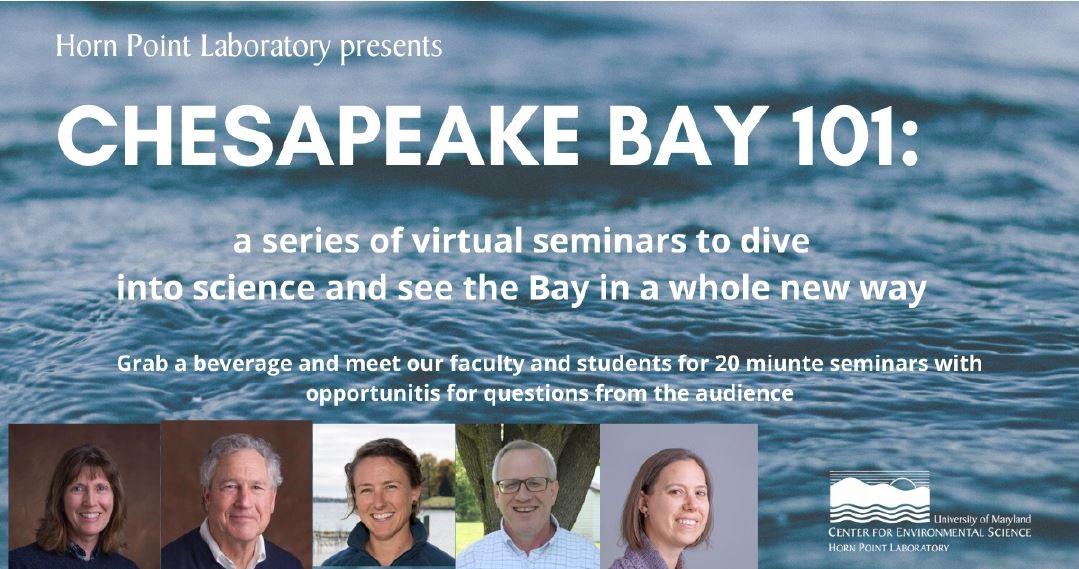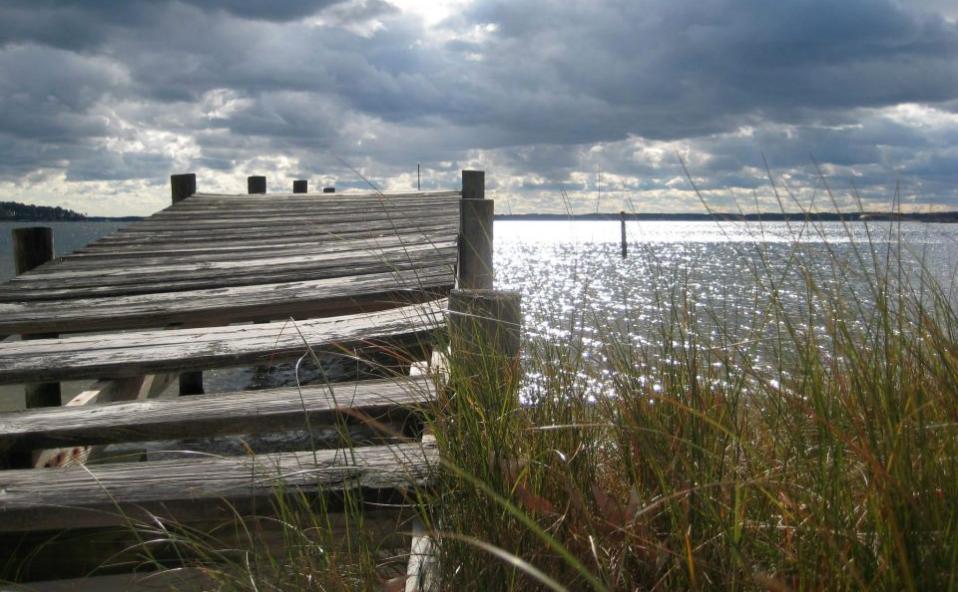Every Wednesday from July 8 through August 5 from 5:00 to 5:30 pm you can join Horn Point Laboratory researchers and participate in a free, virtual seminar series about the science of the Chesapeake Bay. The thirty-minute programs will shed light into the mysteries of the Bay and highlight Horn Point programs working to improve the health of the Bay and its aquatic life. Questions and participation by all will be encouraged.
The Chesapeake Bay and its rivers are the lifeblood of the Eastern Shore, defining the region like no other water body in the world. While many easily recognize the natural beauty Bay country offers, the Horn Point Laboratory’s “Bay 101 – Science of the Chesapeake for Non-Scientists” will make the science of the Chesapeake Bay as accessible as its beauty.
Pour your favorite beverage, get comfortable, and dive in to science to see the Bay in a whole new way with Horn Point Lab’s – Bay 101.
To register, visit umces.edu/hpl or contact Carin Starr at [email protected].
 Seminars include:
Seminars include:
July 8: “Chesapeake Bay’s currents and winds for sailors and water enthusiasts” Bill Boicourt
Beneath the sometimes hard-to-predict tides of Chesapeake Bay are remarkably dynamic motions. We will explore this classic estuary and the forces that drive it.
July 15: “News on living shorelines to protect our waterfronts” Cindy Palinkas
Living shorelines are a more natural way to protect shorelines from erosion and provide valuable coastal habitat. Learn about what happens after they are installed, both at the shoreline and in adjacent waters.
July 22: “Bolstering the Maryland oyster aquaculture industry” Shannon Hood
Oyster aquaculture is a growing industry in Maryland, attracting people from diverse backgrounds. Learn about this industry which provides an opportunity to feed a growing population, while providing ecological benefits that can benefit all of us.
July 29: “Modeling: what it is and how it helps predict the future of the Chesapeake Bay” Kenny Rose
Many large-scale restoration projects rely heavily on computer simulation models to determine the best ways to restore the system and how progress will track in time. Learn the basics of these types of models and how they are used, using Chesapeake Bay as an example.
August 5: “Chesapeake Bay underwater grasses” Lorie Staver
Underwater grasses are an important component of the Chesapeake Bay ecosystem and an indicator of Bay health. Learn about what they are, why they matter, and about our role in their decline and recovery.”
UNIVERSITY OF MARYLAND CENTER FOR ENVIRONMENTAL SCIENCE
The Horn Point Laboratory is part of the University of Maryland Center for Environmental Science, the University System of Maryland’s environmental research institution. UMCES researchers are helping improve our scientific understanding of Maryland, the region and the world through five research centers – Chesapeake Biological Laboratory in Solomons, Appalachian Laboratory in Frostburg, Horn Point Laboratory in Cambridge, Institute of Marine and Environmental Technology in Baltimore, and the Maryland Sea Grant College in College Park. www.umces.edu.
Don’t miss the latest! You can subscribe to The Talbot Spy‘s free Daily Intelligence Report here



Write a Letter to the Editor on this Article
We encourage readers to offer their point of view on this article by submitting the following form. Editing is sometimes necessary and is done at the discretion of the editorial staff.